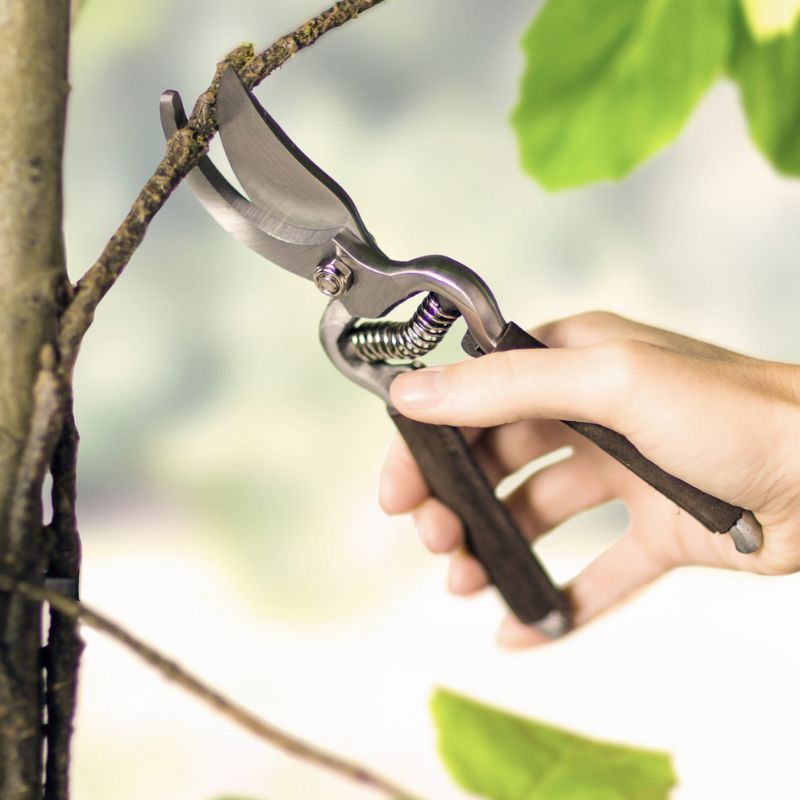Mimicking Nature: Why we must cut our wildflower meadow.
Mimicking Nature: Why we must cut our wildflower meadow.
A question that i'm frequently asked is whether it is essential to cut back a wildflower meadow in autumn. Often people want to know what happens if it is not cut and let go back to nature.
The quick answer is Yes, the meadow must be cut every year in the autumn when it has finished flowering and the cuttings should be taken away. This helps to keep the meadow healthy and strong with a good variety of wildflower species thriving in it for years to come.

Why cut the meadow?
Firstly, let's think about how wildflower meadows in the wild are created. While we may assume that they are entirely natural and self sustaining, this is not the case. Almost all natural wildflower meadows require an external input to grow and to flourish.
In the wild, this will be due to migrating herds of herbivores like Buffalo, Deer, etc. depending on the location. During the Summer months, these herds move through the landscape, grazing on foliage and flowers as they travel.
This grazing serves to clear the ground of vegetation, allowing sunlight to reach the soil surface once again. The seed is dispersed by the moving animals and their dung, and the resulting clearance provides the perfect growing conditions for the next years blooms.
In the traditional wildflower meadows of Ireland and the UK, a similar process took occured. This time it was farmers harvesting hay rather than roving herds of Buffalo clearing as they move.
The meadow was allowed to grow for the Spring and Summer months before being cut in the late Summer or Autumn. The foliage was cut and then allowed to dry on the ground during warm weather.
As the foliage and plants dry, the seeds in them ripen. When the farmer tosses the hay to allow it to dry, the seed is knocked out of the heads and dispersed back into the field, replenishing the seedbank. Eventually the foliage is taken away to be fed as fodder for animals in the winter months.
Again, this activity allows sunlight to reach the soil and initiate the growth of the next years plants.
In modern, intensive agriculture, the use of silage as winter fodder has replaced traditional haymaking techniques. Silage can be cut multiple times per year and requires high inputs of fertiliser to keep the grass growing. Because of this, wildflower plants never get the chance to flower, let alone produce seed. Eventually they retreat and disappear from the meadow and only grass remains.
When we cut the wildflower meadow and remove the cuttings, we are replicating the processes that helped to create the natural and semi natural wildflower meadows.
So what happens if I don’t cut and decide to let the meadow go back to nature?
This is where looking at nature helps once again.
In the wild, most land wants to return to woodland. This involves different stages over many decades before it reaches this state.
If a wildflower meadow is left uncut, the foliage will topple over and create a mulch or ‘thatch’ on top of the soil. This foliage, as it breaks down, will add more fertility to the soil, promoting the growth of grass and weed species. The ‘thatch’ or mulch will also affect the meadow in more serious ways.
First, it will block sunlight from reaching the soil and lessen the growth of the following years plants. At the same time, it will create a dense barrier over time that will stop all but the toughest plants from pushing their way upwards through it. Plants such as dock, thistle, briar and nettle will push through, while more delicate wildflowers will struggle to survive and eventually die off. The tough plants will eventually become the dominant species in the meadow, along with some of the tougher grasses like Ryegrass and Scutch.
You now have ‘Scrub’, one of the early stages of land returning to woodland, and an early stage of ‘rewilding’.
This is a very good habitat for wildlife, but aesthetically is not much to look at.
After a few more years you will have the smaller pioneer tree and shrub species such as Gorse, Broom, and Juniper enter the picture. Another decade or so and you will have the larger, longer lived, pioneers like Birch, Willow, and Hazel. Give it another two decades and you’ll have your long-lived climax trees growing – the Oak and Scots Pine to name but two.
In about a century, you will have a wonderful established woodland for walks and relaxation. Unfortunately, by this time your initial wildflower meadow is just a whisper in the past.

In conclusion, while it may seem tempting to let your meadow return to nature by avoiding the essential cutting, it is crucial to understand why the yearly cutting and management must be done. By mimicking natural and traditional processes such as grazing and traditional haymaking, we can maintain the health and diversity of our wildflower habitat and ensure that we have a beautiful meadow that returns year after year.













